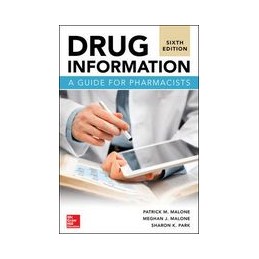- Reduced price

Order to parcel locker

easy pay


 Delivery policy
Delivery policy
Choose Paczkomat Inpost, Orlen Paczka, DHL, DPD or Poczta Polska. Click for more details
 Security policy
Security policy
Pay with a quick bank transfer, payment card or cash on delivery. Click for more details
 Return policy
Return policy
If you are a consumer, you can return the goods within 14 days. Click for more details
The guide pharmacists and students turn to first for cutting-edge coverage of drug information
The goal of Drug Information:: A Guide for Pharmacists, Sixth Edition is to teach students and practitioners how to effectively research, interpret, evaluate, collate, and disseminate drug information in the most efficient and effective manner possible. Updated to reflect the realities of todays practice, the book also addresses important issues such as the legal and ethical considerations of providing drug information.
Drug Information:: A Guide for Pharmacists begins by introducing the concept of drug information, including its history, and provides details on the various places drug information specialists may find employment. This is followed by information on how to answer a question, from the process of gathering necessary background information through determining the actual informational need, to answering the question. The chapter on drug information resources includes descriptions of the most commonly used references and contains new information on apps available to practitioners. As with past editions, practical examples are also provided.
The Sixth Edition has been updated throughout, with chapters from previous editions rearranged to make the subject flow better. This edition is also enhanced by the addition of new chapters on journal clubs and counterfeit drugs/drug shortages. In addition, coverage of Policy Development, Project Design and Implementation has been greatly expanded.
Data sheet
